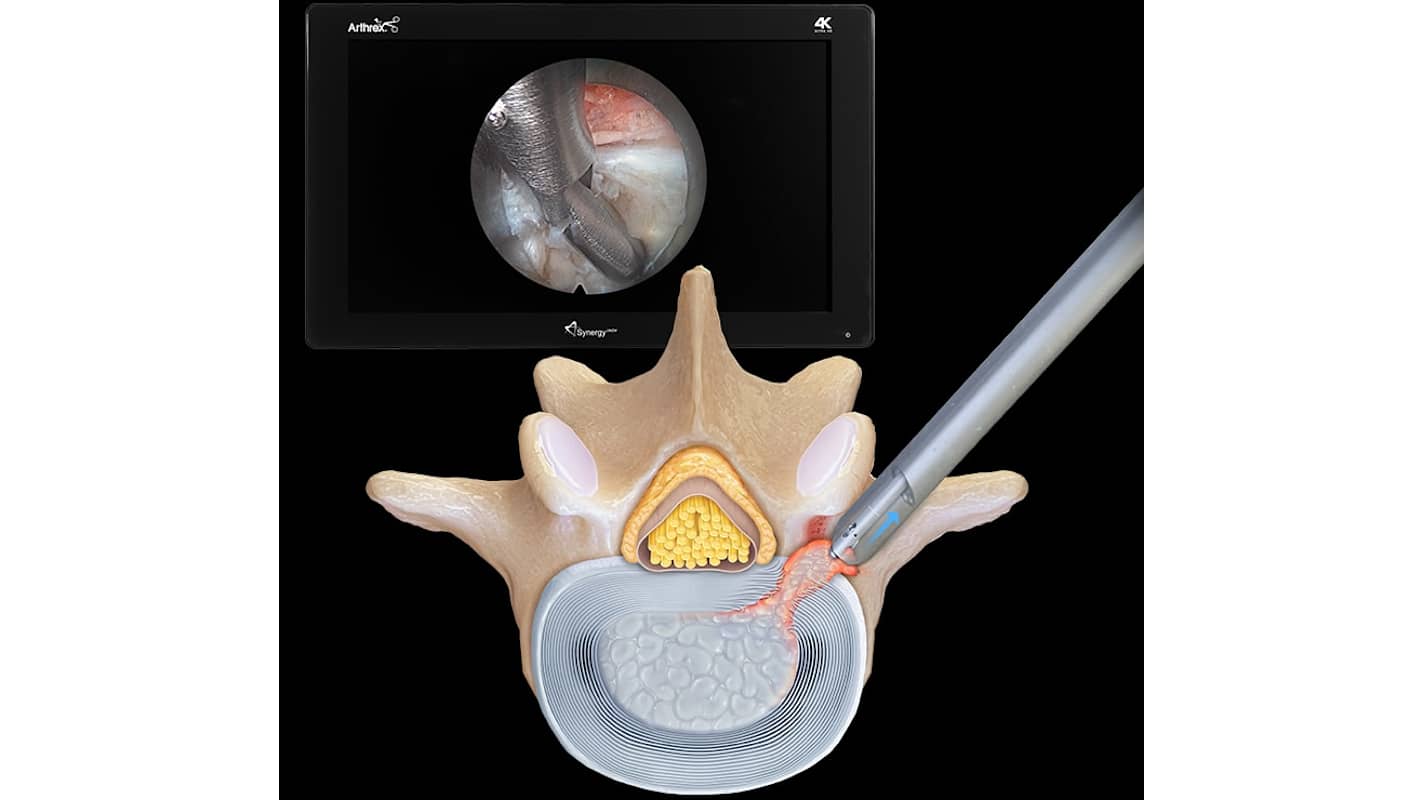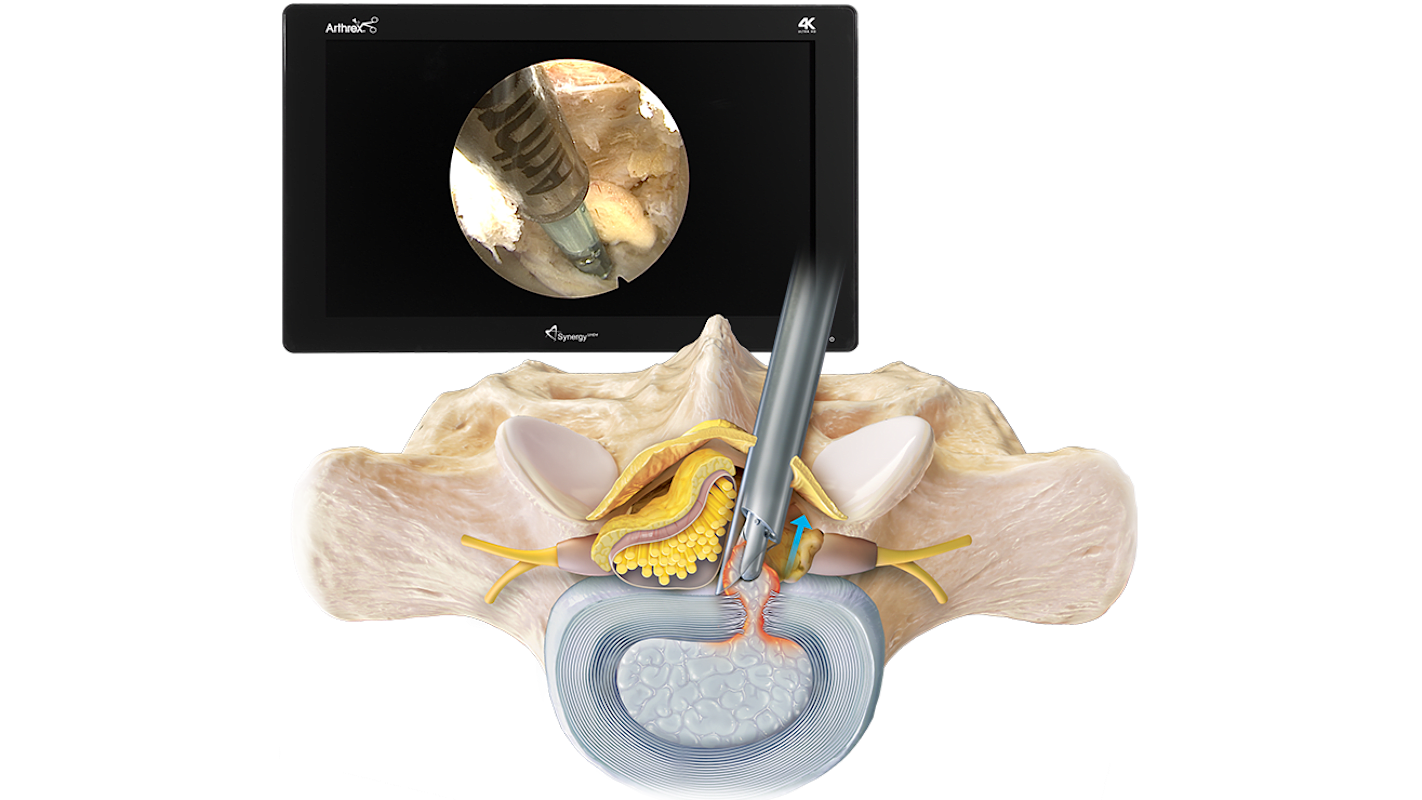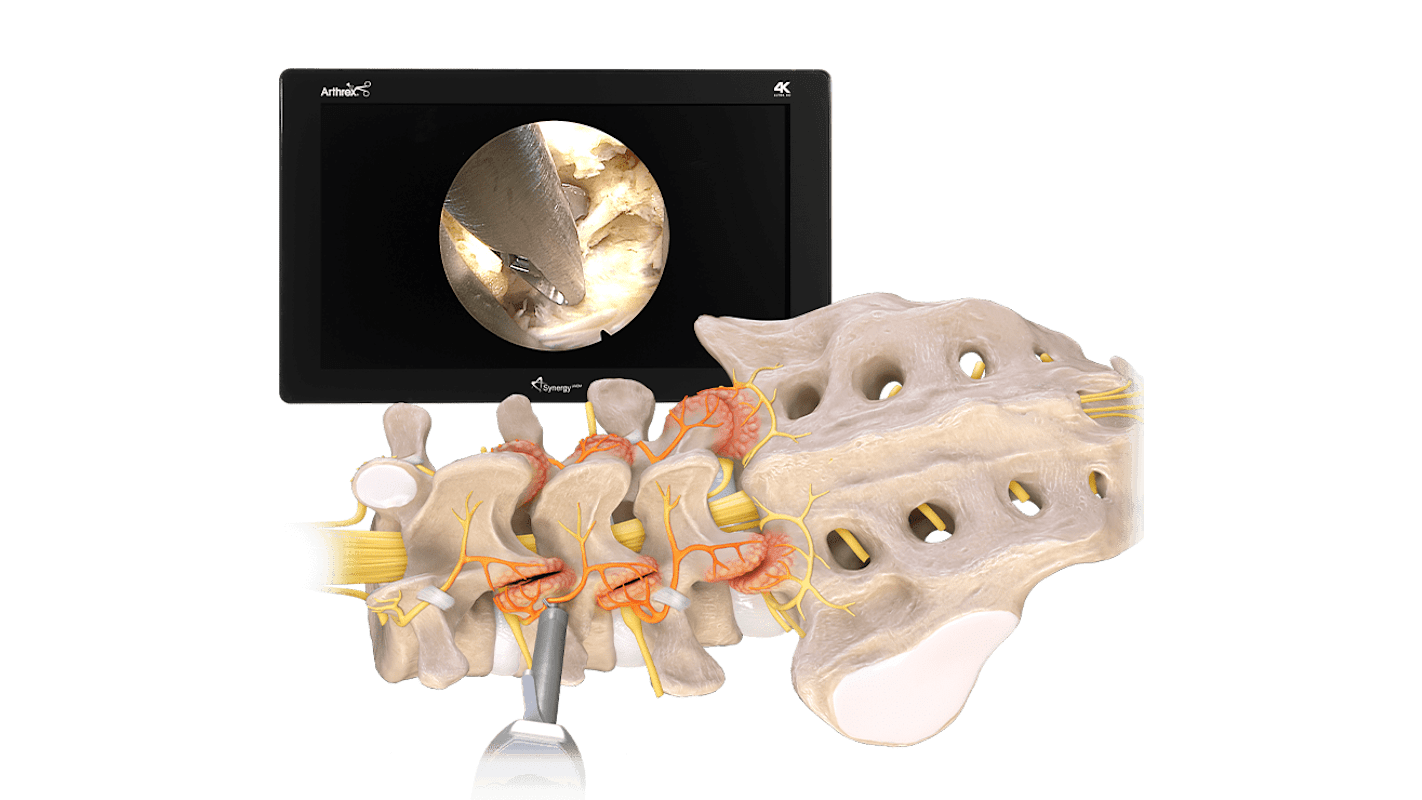Wirbelsäule
Cervical Foraminotomy and Decompression
Minimally invasive endoscopic cervical foraminotomy and decompression is designed to treat cervical radiculopathy and other conditions that compress the nerve root. Utilizing an endoscope, surgeons can directly visualize and remove compressive pathology such as disc herniations, osteophytes, and hypertrophic ligaments. This technique minimizes soft-tissue disruption, reduces blood loss, allows for quicker recovery, and has demonstrated high clinical success rates, with a systematic review reporting 91.3% overall and up to 94.2% for posterior approaches.1,2 Additionally, long-term follow-ups show lasting symptom relief, high patient satisfaction, and a lower risk of adjacent segment disease compared to traditional ACDF surgery.3
Potential applications include treatment of cervical radiculopathy, herniated cervical discs, cervical spondylosis, foraminal stenosis, and osteophytes (bone spurs). Research supports its effectiveness in treating both soft disc herniations, where the nucleus pulposus compresses the nerve root, and hard disc herniations caused by calcified disc material.4 A lower incidence of spinal instability has also been reported, suggesting a reduced need for future spinal fusion procedures.5
Careful patient selection is key to optimal surgical outcomes; those with major deformity, instability, or large central herniations may require alternative surgery. With proper selection and advancing technology, this method remains a safe, effective, and motion-preserving option for cervical nerve decompression.1
References
1. Huang CC, Fitts J, Huie D, Bhowmick DA, Abd-El-Barr MM. Evolution of cervical endoscopic spine surgery: current progress and future directions—a narrative review. J Clin Med. 2024;13(7):2122. doi:10.3390/jcm13072122
2. Alomar SA, Maghrabi Y, Baeesa SS, Alves ÓL. Outcome of anterior and posterior endoscopic procedures for cervical radiculopathy due to degenerative disk disease: a systematic review and meta-analysis. Global Spine J. 2022;12(7):1546-1560. doi:10.1177/2192568221103727
3. Kim HS, Wu PH, Tze-Chun Lau E, Jang IT. Narrative review of uniportal posterior endoscopic cervical foraminotomy. World Neurosurg. 2024;181:148-153. doi:10.1016/j.wneu.2023.10.021
4. Bergamaschi JPM, Brito MBS, Araújo FF, et al. Surgical technique of central and over-the-top full-endoscopic decompression of the cervical spine: a technical note. J Pers Med. 2023;13(10):1508. doi:10.3390/jpm13101508
5. Zhang C, Wu J, Zheng W, Li C, Zhou Y. Posterior endoscopic cervical decompression: review and technical note. Neurospine. 2020;17(Suppl 1):S74-S80. doi:10.14245/ns.2040166.083
Mehr erfahren








